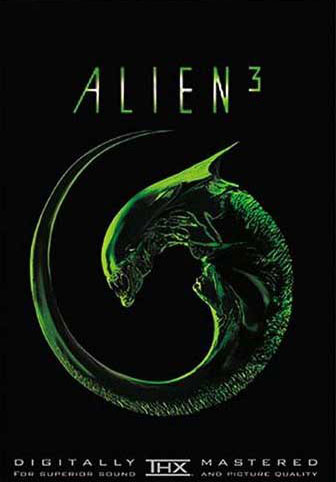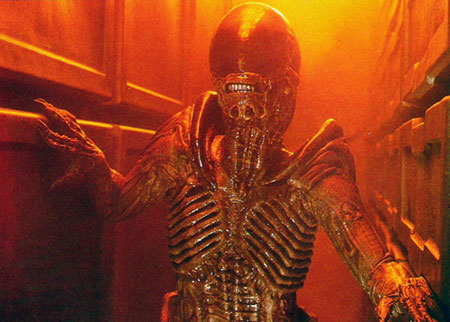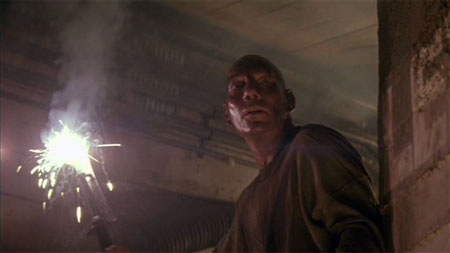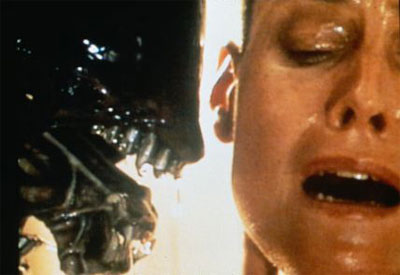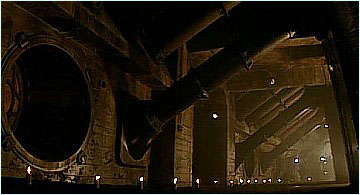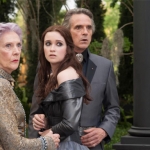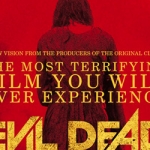Previously, the Cinema Doctor slapped Brett Ratner across the face with his rubber gloves by pulling the plug on his comatose entry in the X-Men franchise. However, 20th Century Fox is still out there spreading their pestilence upon the world. This time The Cinema Doctor will confront Fox for their franchise killing crimes, and examine the third entry in the beloved Alien franchise from Fight Club director David Fincher.
TODAY’S PATIENT:
Alien 3
Directed by: David Fincher
Starring: Sigourney Weaver, Charles S. Dutton, Charles Dance, Paul McGann, Ralph Brown, Pete Postlethwaite, and Lance Henriksen
PATIENT DESCRIPTION: Shortly after the events in Aliens, Ripley, Newt, Hicks, and the remnants of Bishop slumber in hypersleep, unaware that an alien facehugger is on board. The facehugger causes an electrical fire on the Sulaco, in turn causing the crew to be ejected in an EEV onto a nearby planet. The planet is Fury 161, a run-down maximum security prison. When the EEV crashes, only Ripley survives, and her arrival causes a rift between the prisoners who have taken on a religion (along with a vow of celibacy). What causes an even bigger rift is that an alien has burst forth and is proceeding to pick off prisoners one by one. Without weapons, the prisoners struggle to survive, but Ripley seems to be the only one the alien isn’t interested in killing.
EXAMINATION:
HEALTHY ASPECTS:
- An always-game Sigourney Weaver makes the best of the situation by maintaining total authority in the role of Ripley.
- The supporting cast is exceptionally strong. Honorable mentions include Charles S. Dutton, Charles Dance, and Paul McGann.
- The setting is actually a very clever idea, as it offers the audience a new aspect of the not-so-glamorous universe created in the prior films.
- The tension is enhanced by the fact that this prison has no weapons of any kind. This time the characters have to rely on their wits to outmaneuver the alien.
- The prison sets maintain that uneasy claustrophobic feel of the previous two films, but the more open sets are far more impressive.
- The effects crew strive to make this a whole new ballgame by making the physicality of the alien more primal, more animalistic. Indeed, it does seem to be more of a hunter than a soldier.
- The final showdown sequence is on a constant high as Ripley and the prisoners strive to trap the alien in order to drown it in hot lead.
- Said chase leads to a fitting face-off between Ripley and the alien. I will say dousing the white hot alien, causing it to shatter, is quite clever considering the Aliens have exoskeletons.
- Cinematically speaking, Ripley’s self-sacrifice is skillfully played out to its full dramatic potential.
EARLY ASSESSMENT: It is indeed a miracle that the film was completed despite the problems which will be
diagnosed shortly. It’s even more impressive that the film actually has remarkable strengths in many important aspects: strong performances, good action sequences, excellent production design — all substantial glimpses of the talents of a potentially great director.
SYMPTOMS:
- The film as a whole feels like a severe step backwards in the evolution of the series. The first film already covered the whole “trapped with a killer alien scenario,” and did it very well. The second film blissfully raised the bar by giving us a lot of aliens, took us into the nest, and showed us the queen. Then in this film we’re back to the “single alien, killing people in confined areas” concept. It does absolutely nothing to innovate a franchise which has a lot of room to do so.
- The idea that all the prisoners have to shave their heads to deal with their lice problem comes at the cost of making any of the characters recognizable from one another. Ripley is easy to catch: she’s a woman. Charles S. Dutton is distinguishable because he’s Charles S. Dutton — we’re used to seeing him bald, and he is an authority figure amongst the prisoners. Unfortunately, you put a few dozen bald Brits in a chase scene where they’re running through seemingly infinite corridors, it’s really hard to tell one from the other in the midst of the hubbub.
- The film feels extremely uneven, owing to the severe hack job editing. There is little room for character development, and the action tends to become “huh?”-inducing. On the whole it seems very clear that the director was definitely NOT present during the post-production phase. Whoever was in the director’s place seems to have been a studio executive appendage who was under orders to keep the action consistent and the plot light. For the more perceptive moviegoer it’s made blatantly clear that this must not have been a very harmonious set to be on.
- The opening credits are also a tad confusing as to the actions of the facehugger. How many facehuggers were there on the Sulaco? Did one latch onto Ripley, and die? Was there a second one that sabotaged the Sulaco and hitched a lift on the EEV and inevitably found a host? There is really never any clarification on this point.
- As previously stated, the dramatic payoff of Ripley’s sacrifice is executed extremely well. Unfortunately, this film coming out so soon after the Terminator 2 phenomenon made this ending seem like too much of a ripoff. Thus, the impact is ruined.
DIAGNOSIS: A Classic Case of Studious Interferiosis. It is absolutely no secret that David Fincher bailed on
the making of this film after the shooting wrapped. Fincher cited that the executives would not stop fighting
Fincher for control of Alien 3‘s development. The executives clearly thought Fincher was going to be just another wannabe who was hungry for his next big gig, leaving the film in the merciless hands of the cruel overseers at 20th Century Fox. The execs were only interested in a money maker; they knew that audiences would come in droves regardless of the film’s quality. So they opted to have their monkey-boy, fresh-outta-film-school editors do the job in an invariably half-assed fashion. The final result leaves the film looking sloppy, confusing, and on the whole dissatisfying. The studio’s interference can also account for the fact that Alien 3 felt like a significant step backwards from the previous two films. You get the feeling that the execs didn’t want to pony up the dough after reading the early drafts, and forced writers David Giler and Walter Hill to downgrade the story, making it feel like the Alien equivalent to Superman III — a soulless husk of a great series, sired by execs seeing green in any picture they see, when they should be paying attention to the picture as a whole.
PRESCRIPTION: Thanks to the fantastic advancements in the DVD market, Alien 3‘s condition has been elevated to crippled schizophrenic, moving toward becoming a coherent entity with a severe limp. With the release of the Alien Quadrilogy box set, a massive amount of deleted footage has been edited back into the film, thus creating a far superior version of the film that definitely gives a significant glimpse into the vision of David Fincher. Just as James Cameron’s cut of Aliens expanded greatly on the character of Ripley, the new cut of Alien 3 greatly expands on all the prisoners in the film, making them far more than just statistics in a body count. Though it is sad that David Fincher washed his hands of the film, it is a relief to see that Fox had some semblance of regret towards their behavior. The new cut is definitely an apology to all Alien fans concerned.
CAN THIS PATIENT BE SAVED? This patient’s condition has indeed improved with the application of recent advancements in home video technology, and I am proud to say that though Alien 3 is still by no means a superior sequel to it predecessors, it is far more watchable than the choppy, sometimes bewildering theatrical cut.
NEXT SESSION: The Cinema Doctor is going to determine whether or not Vince Vaughn really has issues with his mother.


